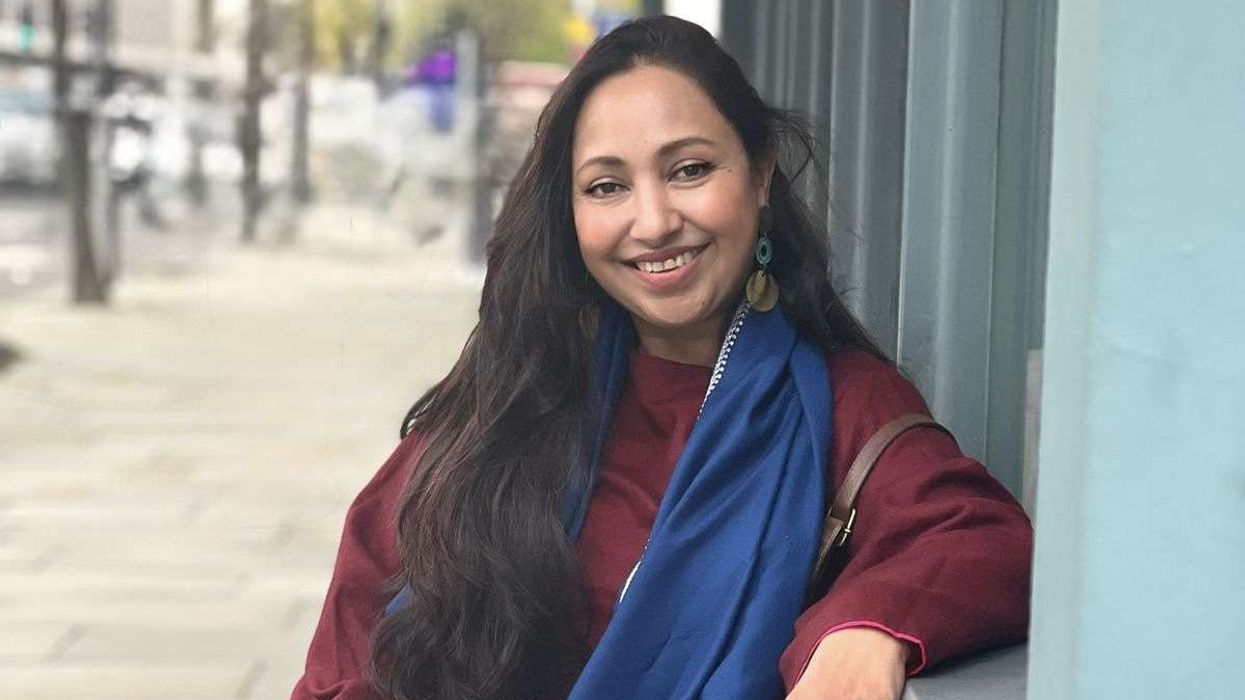TV STAR AVINASH MUKHERJEE ON LEARNING, ACTING AND LIFE IN LOCKDOWN
by ASJAD NAZIR
TALENTED actor Avinash Mukherjee has been impressing audiences ever since his star-making turn as a 10-year-old in hit drama serial Balika Vadhu, which still enjoys a loyal fan following and is being re-telecast during lockdown.
The 22-year-old has since delivered winning performances in diverse projects that include the very popular serial Shakti – Astitva Ke Ehsaas Ki.
Terrific TV star Avinash has been trying to keep busy during lockdown, but was happy to speak to Eastern Eye about his career, self-isolation, acting and future hopes.
How have you been handling the Covid-19 lockdown?
I’ve been handling it really well and spent a lot of time with my family. Of course, this is a situation that mankind had never perceived possible, where we would actually be sitting in our homes for three months with bad news all over, especially in a country like India where the minimum wage is less than Rs 30. People are migrating back to their own states because of the extended lockdown and social distancing by the government.
What have you been doing?
I’ve been trying to help and doing my bit as much as I can. I’ve been working out, taking care of my body and mind, rereading my favourite books and rewatching my favourite films. I have also been working and creating new business ventures, and just dealing with things.
What has helped you most to cope with the lockdown?
The new ventures I have been working on. I really can’t sit idle, so if I’m not shooting I want to keep doing something really productive. I asked one of my mentors Ronit Bose Roy, ‘that you are so successful, you have power, money, fame, but what keeps your mind going.’ He just said two words 'adoption' and 'remapping', so that’s exactly what I do. I took that as a Guru mantra and whatever situation it is, I take it as adoption and remapping.
What do you mean?
So when the lockdown hit us, I remapped and thought about what productive thing can be done? What are the problems that will come now because of this situation and how can I tackle them? Different situations bring different problems, but they also give you many opportunities to serve, solve and provide valuable solutions to people.
Which of the projects has been closest to your heart?
My most special project is Balika Vadhu and it’s always been my closest. It’s retelecasting now and my mom watches it every day. In fact, it’s 6:22 pm and she is watching Balika Vadhu right now.
What is the plan after lockdown is over?
The plan is to resume shooting as early and safely as possible. To make sure that all my crew and unit members are ok, to see if there is anything I can do for them. I feel we are very fortunate to have a car, home, food on the table and all other necessities, but there are lots of people who don’t get anything. So I urge people that, please, whenever you go back to work, make sure that people around you, who are not so fortunate, are taken care of. Ask them about their family.
What would be your acting master plan going forward?
In Hindi, there is a dialogue, which is ‘master plan bataya nahin, dikhaya jata hai’, which means the master plan is not to be told, it is to be shown. If all goes well and God remains graceful, as he has been always, it will be shown soon.
What would be your dream role?
I have many dream roles. Kabir Singh is the latest. Also what Shah Rukh Khan did in Mohabbatein, what Amitabh Bachchan did in Deewar and Prabhas in Baahubali are the kind of roles I want.
What do you enjoy watching as an audience member?
I watched Paatal Lok, which I liked and also loved Dynasty. I have watched films like the Gangs Of Wasseypur, Joker and Pardes. I enjoy watching crime films and The Godfather is one of my favourites.
If you could master something new, what would it be?
I am actually really looking forward to learning a subject from our ancient Gurukul system in India, which is known as samurda shastra. That is the art of reading people’s faces, which, as we know, is difficult in a world filled with not so simple and very complicated people.
Today, what inspires you?
This interview that will be seen and read by the most wonderful people from the UK, so that what’s inspiring me right now.
Why do you love being an actor?
It is because I have been always afraid of the mortality of human beings since I was a child. I think that it happens with every child when they first come to know the reality of death and see a family member is dying, and realise they can’t see them again. One day I realised this field of acting can make you immortal. Greats like Irrfan Khan, Rishi Kapoor and Raj Kapoor may have sadly passed away, but live on through their work. Acting has also given me an opportunity to be someone I am not and doing it so honestly that I even fool myself, which is a high I jump out of bed for and chase.












